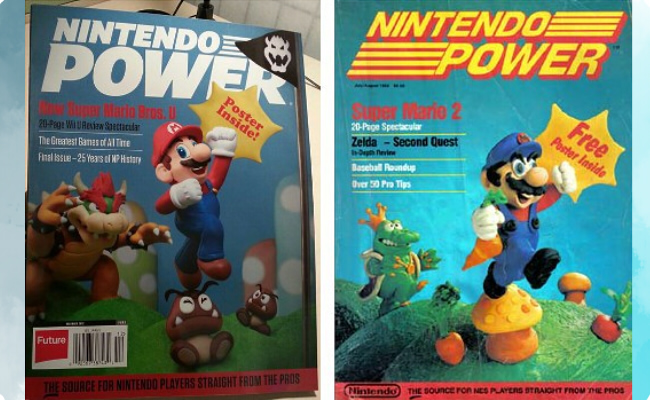The last issue of Nintendo Power says a lot about not just the current generation of gaming, but also the current generation of technology. As technology progresses in a more social manner and print media faces stiff competition, the faster technology is winning. The cheap and fast nature of the internet is what is pushing print media out of the market—but that’s just print media, right? Books and newspapers? The move from print to digital content says a lot about the future of gaming, and the implications are actually quite surprising.
Most media outlets, including gaming news, have already switched to a primarily digital format, lest they be left behind. You wouldn’t be reading this if it wasn’t for the accessibility that internet connectivity allows. With the cost of manufacturing rising almost as fast as demand, it won’t be long before the games industry also has to make the switch—at least as far as games are concerned. It’s easy enough for words to make the transition to digital media, but how do games transfer over? The answer is simple, and several different companies have already addressed this: simply cut physical media entirely and offer a downloadable version of any game they offer.
Steam’s download-only policy is what has made them so successful—they have virtually no manufacturing cost, can offer a healthy amount to both developers and themselves while still keeping their games cheap. With very little to no risk (apart from the time spent developing the store and its games), they only stand to make a profit by publishing games. Other major websites like GOG and IndieCity have followed suit, offering download-only games at a fair price.
The low price also makes it easier for the consumer to afford games, which means increased sales for game companies that opt to publish digital downloads at a fair price. As manufacturing prices get more expensive, it’s likely that we’ll see large companies focus on digital downloads rather than physical releases. Sony has already attempted the move with their PSP Go and PS Vita, although both attempts had some major flaws. The PSP Go did not offer backwards compatibility, while the PS Vita’s downloadable titles are priced the same as store titles and require an expensive memory card sold only by Sony, making them more expensive in the long run than just getting a game. XBLA handles downloadable indie games much better, although the ethics regarding how the store is run are still a little sketchy.
There are many gaming magazines other than Nintendo Power filling the market, but to say they’ve made it through the economy might be an understatement. The increasing price of print media and decreasing demand are just a sign of what’s to come as we move into a digital age; and the increasing price of magazines over the past decade stand as a testament to that. Ultimately, games will go the way of print and find an outlet online. The days of physical game copies aren’t over, but they’re certainly nearing their end.


0 Comments